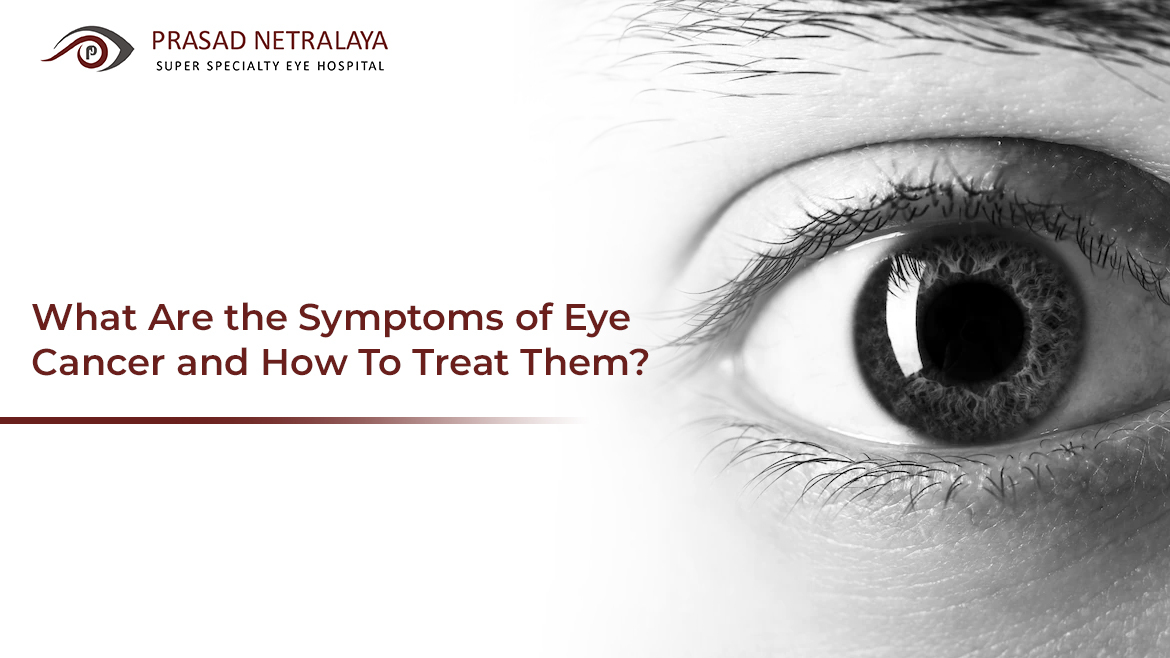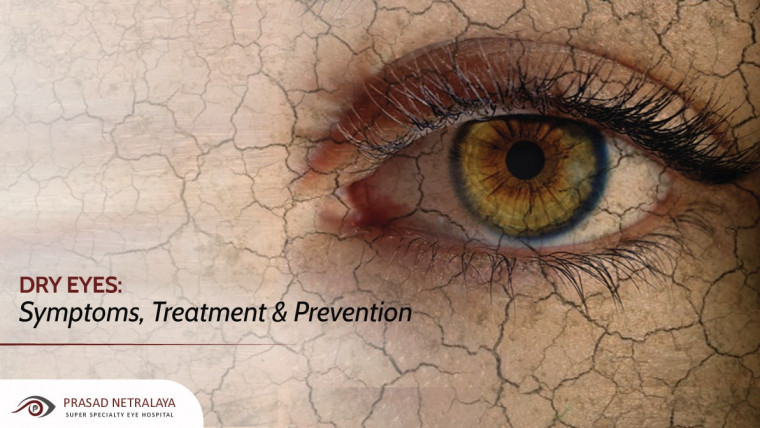While the incidence of eye cancer in the Indian population is low (0.3–0.4%), it’s still vital for one to know what are the symptoms of eye cancer.
As with all other cancers, early detection is critical in controlling eye cancer, but it’s frequently missed because the clinical presentation of these cancers can be variable, and the patient usually ignores the signs and symptoms until it’s too late.
So, this article will talk about the symptoms of eye cancer, the different types of eye cancer, and how you can treat them. We’ll also look at some options for eye cancer treatment in India.
Table of Contents
What Is Eye Cancer?
Eye cancer refers to cancer that begins in any part of the eye. It occurs when healthy cells in or around the eyes grow uncontrollably and form a tumour. If the tumour is benign, it’ll grow but not spread. If it’s malignant, then it can grow and spread to different parts of the body.
What Are the Symptoms of Eye Cancer?
According to the NHS, here are some of the common symptoms of eye cancer:
- Blurry vision
- Partial or total loss of vision
- Shadows, light flashes, or wiggly lines in your vision
- A growing dark patch in your eye
- Bulging of one eye
- Lump on your eyelid that may or may grow
- Pain in or around your eyes (rare symptom)
If you experience these or other symptoms in your eye, please contact your local physician immediately. Although it may not always be eye cancer, it’s better to be safe than sorry.
Types of Eye Cancers
While eye cancer is rare, there has been a recent increase in cases of occurrences and deaths. Therefore, it is vital to know all you can about it and spread awareness on the subject.
Here’s a list of several types of eye cancers you should be aware of.
1. Eye Melanoma
Eye melanoma, also called ocular melanoma, is cancer that develops in the eye’s melanin-producing cells. These cells produce melanin — the pigment that gives colour to your skin and eyes.
Eye melanoma is the most common type of eye cancer. Because it forms in the part of the eye you can’t see in a mirror, it’s hard to detect immediately. Additionally, this cancer doesn’t seem to cause early signs or symptoms.
Eye melanoma common occurs in the following areas:
- Iris: The coloured tissue in the front of the eye that has the pupil in the centre.
- Choroid layer: A thin layer of tissue in the middle layer of the wall of the eye, situated between the sclera (white outer layer of the eye) and the retina (inner layer of nerves in the back of the eye).
- Ciliary body: A ring-shaped muscle behind the iris.
2. Conjunctival Squamous Cell Carcinoma
Conjunctival squamous cell carcinoma is cancer that develops on the surface of the eye. It commonly occurs among older Caucasian people.
It forms as an easily-visible white or yellow-pink nodule on the front surface of the eye. It’s locally invasive, meaning it can invade and destroy the eye.
It rarely spreads to other parts of the body, and it’s usually cured with the proper treatment.
3. Eye Lymphoma
Eye lymphoma, also called ocular lymphoma, is a cancer that can affect the eye. This cancer causes redness in the eye, decreased vision, eye damage, and could result in blindness.
People with immune deficiencies are at higher risk for developing ocular lymphoma.
There are three kinds of ocular lymphoma:
- PIOL/Vitreoretinal Lymphoma: This affects the retina, vitreous (jelly-like substance that fills the eyeball), and optic nerve. It can be aggressive and spread to the brain.
- Uveal Lymphoma: this tumour affects the uvea (located directly beneath the white part of the eye), choroid (blood vessels in the eye, the iris, and the ciliary body. This cancer is usually not that aggressive.
- Ocular Adnexal Lymphoma: This cancer begins in areas outside but near the eye. It affects the eyelids, eye sockets, conjunctiva (lining of the eye), or the lacrimal glands (part of the tear duct).
4. Retinoblastoma
This cancer of the retina develops during the early stages of a baby’s development. It occurs when the retinal cells continue growing beyond their stopping point and form a cancer.
In less than half of cases, it’s caused by a faulty gene, in which case it affects both eyes. The cause for retinoblastoma in the remainder of cases is unknown.
Also Read : What You Should Know About Eyelid Tumor
Reason For Eye Cancer
While the exact reason for eye cancer is unknown, certain risk factors can contribute to getting eye cancer.
Researchers are discovering how specific alterations to cellular DNA can result in the development of cancer. Our risk of contracting specific diseases, such as some types of cancer, can be influenced by our DNA.
Numerous moles or unusual moles are common on the skin in some families; doctors call them atypical. Atypical moles typically have an erratic shape or colour. Additionally, they have a propensity to develop cancer. This type of mole increases a person’s risk of developing skin melanoma and eye melanoma.
The risk of developing eye melanoma is higher in people who have abnormal brown spots (pigmentation) on their uvea (called oculodermal melanocytosis) or iris (called iris naevus).
People with certain eye colours are more likely to develop certain kinds of eye cancer. For example, people with green/hazel eyes are more likely to develop uveal melanoma than those with brown eyes.
Treatment for Eye Cancer
Your doctor will review your treatment options with you if you have been diagnosed with eye cancer.
You should balance each treatment option’s advantages against any potential drawbacks or adverse effects. Treatment for eye cancer may be one of the following, depending on the type, stage, and other factors:
- Surgery: The type of surgery is determined by the location, size, and extent of the tumour, as well as the patient’s general health. You undergo general anaesthesia for each of these procedures (in a deep sleep). Sometimes, surgery may cause a patient to lose all or part of their vision.
- Radiation Therapy: High-energy X-rays are used in radiation therapy to kill cancer cells. It is a typical method of treating eye melanoma. Radiation therapy frequently helps preserve some of the eye’s vision. In some cases, if the radiation harms other eye structures and vision may be lost.
- Laser Therapy: Infrared light is used in laser therapy to heat and kill the tumour. This treatment is only used for smaller eye tumours due to the risks of haemorrhage, retinal dislocation, blocked eye blood vessels, and cancer recurrence.
- Chemotherapy: If eye melanoma has spread to other body parts, chemotherapy may be an option, though other treatments like immunotherapy or targeted drugs may be tried first. Chemotherapy can shrink tumours in some people with melanoma, but it is typically less effective than it is for some other types of cancer.
FAQs
Is Eye Cancer Curable?
Yes, eye cancer is curable, provided you detect it in the early stages. That’s why doctors recommend doing a dilated eye exam once a year.
Can Eye Cancer Spread?
Yes, eye cancer can grow and spread to different organs. Eye cancer cells can sometimes make their way to the liver and grow there. When eye cancer cells spread to any other organ, it’s still referred to as eye cancer.
What Is Eye Cancer Called?
Eye cancer is called intraocular melanoma. While there are names of various kinds of eye cancer, this one is the most common.
Is Eye Cancer Hereditary?
Eye cancer may be hereditary, but it’s rare. When it does carry genetically, it’s due to a mutation in a gene called BAP1, which also leads to other kinds of cancer.
Takeaway
Some forms of eye cancer are treatable and can be cured by doctors. Although therapy may not cure eye cancer, it can often slow or stop its progression.
After treatment, you should continue to see your healthcare providers to check for any signs of recurrence or spread of cancer and to have any necessary testing. They’ll make dealing with treatment-related adverse effects easier and keep your eyesight in good shape. If diagnosed and treated early, eye cancer has a fair prognosis.
Trust Prasad Netralaya for high-quality care from the best and most experienced ophthalmologists. We can help you with eye cancer, glaucoma, cataracts, and other congenital eye disorders.


